Categories: Featured Articles » Interesting electrical news
Number of views: 17809
Comments on the article: 0
Power Generating Pavegen Paving Slabs
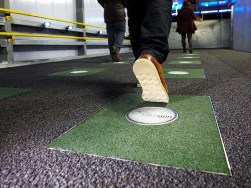 The British company Pavegen Systems Ltd., whose director is Lawrence Kemball-Cook, the author of the technology, successfully produces and sells unique paving tiles around the world that generate electricity thanks to pedestrians walking along it.
The British company Pavegen Systems Ltd., whose director is Lawrence Kemball-Cook, the author of the technology, successfully produces and sells unique paving tiles around the world that generate electricity thanks to pedestrians walking along it.
The idea was realized by Lawrence Kemboll-Cook in 2009, when he studied at the University of Loughborough kinetic solutions for energy networks. Cambell-Cook came up with this idea for tiles while working for one very large energy company.
Since the founding of Pavegen, Lawrence began his move into the market leaders in the energy-harvesting pedestrian sector, generating interest in technology globally. A number of commercial objects at the implementation stage picked up Lawrence's idea, transforming his concept and design into real products.
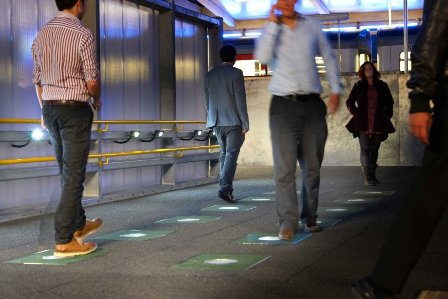
Lawrence is confident that breakthrough technologies open the way to changing people's attitudes to energy, and reduce their dependence on fossil fuels and electrical networks.
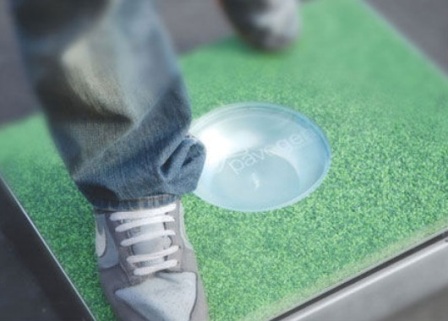
Prior to founding the company and becoming CEO of Pavegen Systems Ltd., Lawrence graduated from Loughborough University, where he studied industrial design and technology. In 2009, he won the Royal Society of the Arts competition to develop a technology solution to enhance UK social mobility, and received £ 5,000. Then he received additional funding, and thus began to make small batches of tiles of five pieces, in order to test them differently.
The inventors tested them in schools and on the busy streets of urban centers, did partisan research, placing them on bus stations and on Oxford Street, just threw green plates on the floor to see if people would even want to walk on them. Fortunately, the answer was yes.
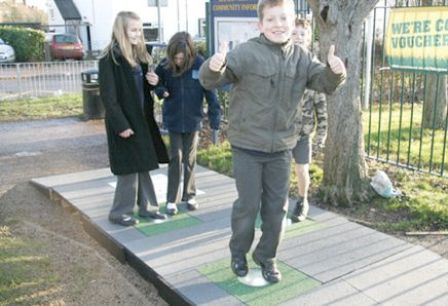
From the very beginning, Campbell Cook believed that the participation of people in the process of generating energy was key to getting the right product. For this reason, slabs made from recycled rubber and polymer concrete have in the center Light-emitting diodethat lights up when someone steps on them.
The innovative tile is made of flexible waterproof material obtained from the processing of used car tires, which gives the tile strength and makes it resistant to abrasion. The tile body is made of special stainless steel. When pressed, the upper edge bends by 5 millimeters, and causes the integrated converter to generate electricity.
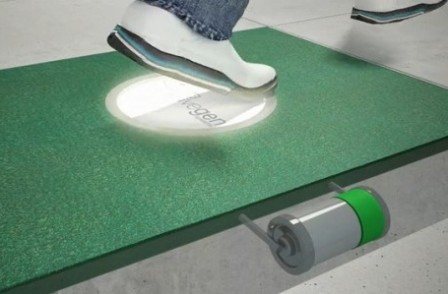
Electricity can accumulate in lithium batteryor go directly to power the illumination of advertising signs, shop windows, bus stops, etc. The initial idea was to power streetlights and signs on city streets from the energy of people's steps. And in just three years, the company reached a level where its products could already be found in cities around the world. When asked how he succeeded, Lawrence replies: "worked hard and hard."

The technology of the converter is kept secret, but the engineers said that their solution is different from traditional piezoelectric transducers. Piezogenerators require “high peaks,” says the developer. The time span between the peaks makes conversion to DC difficult. Pavegan technology shortens the gaps between the peaks and allows you to get more direct current.
The developers also said that the solution is hybrid, and allows you to effectively capture and save energy, after it is converted to a supply of 12 volts.This is similar to the piezo in the only aspect that the top sheet of the tile deviates by 5 mm, and this movement is converted into electricity.
As a result, the technology allows the conversion of kinetic energy into electricity, which can be stored for later use for various purposes. Every time someone steps on a tile, renewable energy is collected from under him.
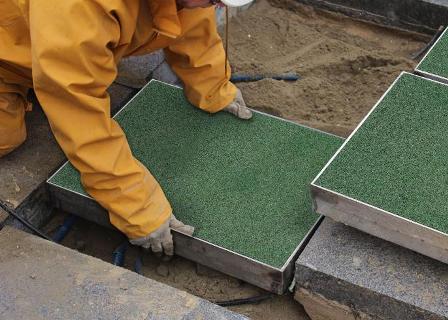
This technology is best suited for the crowded pedestrian streets of modern megalopolises. This is the first significant step for people on the path to generating clean energy wherever there is paving slabs. The top surface of the tile block is 100% recycled rubber. Tile base - 80% of recycled materials. The system allows you to upgrade existing pavement, and can be used in the construction of new pedestrian walkways.
Pavegen is designed to withstand harsh loads in open areas with high traffic. The waterproofness of the tile allows it to be used both in the external environment, on the streets, and indoors. The produced blocks fully comply with the European requirements for any products placed on the market of the European Economic Area.
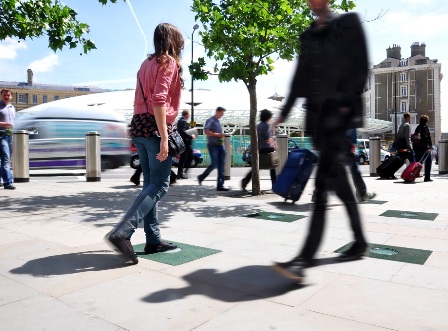
Pavegen received its first commercial order for the creation of power-generating paving slabs for the largest urban shopping center in Europe - Westfield Stratford City, near the Olympic site in London. In 2012, during the summer Olympics in London, Pavegen tiles were already installed on several crowded streets, and in a couple of weeks they collected 20 megajoules of electricity, which was enough to power the lighting of the capital's streets.
The company has an agreement with the manufacturer of drinks Diageo, which already distribute Pavegen tiles around the world from Brazil to Vietnam, five tiles feed street lamps throughout the night. The tile can also send data wirelessly, thanks to the energy of the steps, and thus be integrated into smart city systems.
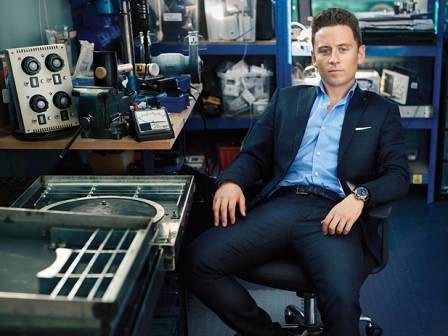
“I think that we are only on the tip of the iceberg compared to what else can be done. Power supplies for consumer devices can be integrated into clothing. This is just the beginning in the renewable energy sector, ”says Lokrens.
Many industrial design experts are confident that Lawrence Cambell-Cooke's electricity-generating paving slabs will soon be distributed worldwide.
See also at bgv.electricianexp.com
:
